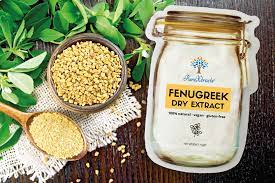Antidiabetic Effects of Fenugreek and Cinnamon Extract in Diabetic Mice
Abstract
Background: Diabetes is a life-threatening disease around the globe and causes insulin resistance. Several herbal andallopathic medicines are used against diabetes but some may have fatal side effects. The current study was designed to evaluate the control of hyperglycemia by the use of the combined aqueous extract of cinnamon and fenugreek. Materials and methods: Mice were divided into four groups. Alloxan monohydrate was used to induce diabetes in albino mice with an intraperitoneal dose (200mg/kg body weight). Group 1 (-ve control) consisted of 3 mice with no diabetes, group 2 (+ve control) included 6 mice with diabetes having no treatment, group 3 (herbal treated) contained 6 mice treated with cinnamon and fenugreek orally (200mg/kg) for 21 days (3 weeks) and 6 mice in group 4 were treated with metformin (allopathic). Results: Alloxan monohydrate caused diabetes and an increase in blood sugar level from 98.40±3.89 mg/dl on day 0 to 212.00±12.41mg/dl onday 21 respectively. There was a decrease in body weight from 27.00±0.89gm to 24.42±0.73gm from 0 to 21 days respectively.Blood from alloxan-induced diabetic mice had a high level of urea from 13.2±1.02 to 34.4±1.47 and elevation of creatinine from 0.72±0.058 to 2.88±0.27 from 0 to 21 days respectively. Kidney of alloxan-induced diabetic mice showed marked degenerationof glomeruli with glomerular atrophies. Conclusion: There was a significant decrease in blood sugar, urea and creatinine levels in treated groups of diabetic mice after the administration of extracts.References
Kong, S., Ruan, J., Zhang, K., et., 2014. The prevention and control type-2 diabetes by changing lifestyle and dietary pattern. Journal of education and health promotion. Peerj. 6, e4542. https://doi.org/10.7717/peerj.4542
Health UDo, Services H. 2011. National Diabetes Information Clearinghouse (NDIC). National diabetes statistics.
Lin, X., Xu, Y., Pan, X., et al., 2020. Global, regional, and national burden and trend of diabetes in 195 countries and territories: an analysis from 1990 to 2025. Sci. Rep. 10 (1), 1-11. https://doi.org/10.1038/s41598-020-71908-9
Asif, M., 2014. The prevention and control the type-2 diabetes by changing lifestyle and dietary pattern. J. Educ. Health. Promot. https://doi.org/10.4103/2277-9531.127541
Przeor, M., 2022. Some Common Medicinal Plants with Antidiabetic Activity, Known and Available in Europe (A Mini-Review). Pharmaceuticals 15 (1), 65. https://doi.org/10.3390/ph15010065
Barnes, P. M., Powell-Griner, E., mcfann, K., et al., 2002. Complementary and alternative medicine use among adults: United States. In: Seminars in integrative medicine, vol. 2: Elsevier; 2004: 54-71. https://doi.org/10.1016/j.sigm.2004.07.003
Louati, K., Vidal, C., Berenbaum. F., Sellam, J., 2015. Association between diabetes mellitus and osteoarthritis: systematic literature review and meta-analysis. RMD open. 1 (1): e000077. https://doi.org/10.1136/rmdopen-2015-000077
Chiang, J.L., Kirkman, M.S., Laffel, L.M., et al., 2014. Type 1 diabetes through the life span: a position statement of the American Diabetes Association. Diabetes Care. 37 (7), 2034-2054. https://doi.org/10.2337/dc14-1140
Ahmad, H., Kashif, S., Afreen, A., et al., 2021. Comparative effect of Fenugreek and Cinnamon on management of newly diagnosed cases of Type-2 Diabetes Mellitus. Food. Sci. Technol. https://doi.org/10.1590/fst.47720
Bahmani, M., Shirzad, H., Mirhosseini, M., et al., 2016. A review on ethnobotanical and therapeutic uses of fenugreek (Trigonella foenum-graceum L). J. Evid. Based. Complement. Altern. Med. 21 (1), 53-62. https://doi.org/10.1177/2156587215583405
Haeri, M.R., Limaki, H.K., White, C.J.B., et al., 2012. Non-insulin dependent anti-diabetic activity of (2S, 3R, 4S) 4-hydroxyisoleucine of fenugreek (Trigonella foenum graecum) in streptozotocin-induced type I diabetic rats. Phytomedicine. 19 (7). 571-574. https://doi.org/10.1016/j.phymed.2012.01.004
Singh, P., Ishteyaque, S., Prajapati, R., et al., 2022. Assessment of antidiabetic effect of 4-HIL in type 2 diabetic and healthy Sprague Dawley rats. Hum. Exp. Toxicol. 41, 09603271211061873. https://doi.org/10.1177/09603271211061873
Cheng, D.M., Kuhn, P., Poulev, A., et al., 2012. In vivo and in vitro antidiabetic effects of aqueous cinnamon extract and cinnamon polyphenol-enhanced food matrix. Food. Chem. 135 (4), 2994-3002. https://doi.org/10.1016/j.foodchem.2012.06.117
Arshadi, S., Ali Azarbayjani, M., Hajiaghaalipour, F., et al., 2015. Evaluation of Trigonella foenum-graecum extract in combination with swimming exercise compared to glibenclamide consumption on type 2 Diabetic rodents. Food. Nutr. Res. 59 (1), 29717. https://doi.org/10.3402/fnr.v59.29717
Vanitha, M., Karthikeyan, J., 2013. Evaluation of aloevera gel for its anti inflammatory activity in diabetes mellitus using animal model system. Int. J. Drug Dev. Res. 5 (1), 0-0.
Luka, C., Tijjani, H., 2013. Comparative studies of the aqueous extracts of Ocimum gratissimum, aloe vera, brassica oleraceaand ipomoea batatas on some biochemical parameters in diabetic rats. IOSR J. Pharm. Biol. Sci. 6, 23-29.
Panche, A., Diwan, A., Chandra, S., 2016. Flavonoids: an overview. J. Nutri. Sci. 5. https://doi.org/10.1017/jns.2016.41
Zamir, R., Hosen, A., Ullah, M.O., et al., 2015. Microbial and heavy metal contaminant of antidiabetic herbal preparations formulated in Bangladesh. J. Evid. Based. Complement. Altern. Med. 2015. https://doi.org/10.1155/2015/243593
Kizilaslan, N., Erdem, N.Z., 2019. The effect of different amounts of cinnamon consumption on blood glucose in healthy adult individuals. Int. J. Food. Sci. 2019. https://doi.org/10.1155/2019/4138534
Wang, J., Wang, S., Yang, J., et al., 2021. Acute Effects of Cinnamon Spice on Post-prandial Glucose and Insulin in Normal Weight and Overweight/Obese Subjects: A Pilot Study. Front. Nutr. 374. https://doi.org/10.3389/fnut.2020.619782
Qin, B., Qiu, W., Avramoglu, R.K., et al., 2007. Tumor necrosis factor-α induces intestinal insulin resistance and stimulates the overproduction of intestinal apolipoprotein B48-containing lipoproteins. Diabetes. 56 (2), 450-461. https://doi.org/10.2337/db06-0518
Beji, R.S., Khemir, S., Wannes, W.A., et al., 2018. Antidiabetic, antihyperlipidemic and antioxidant influences of the spice cinnamon (Cinnamomum zeylanicumon) in experimental rats. Braz. J. Pharm. Sci. 54. https://doi.org/10.1590/s2175-97902018000217576
Cinti, F., Bouchi, R., Kim-Muller, J.Y., et al., 2016. Evidence of β-cell dedifferentiation in human type 2 diabetes. J. Clin. Endocrinol. Metab. 101 (3), 1044-1054. https://doi.org/10.1210/jc.2015-2860
Nowotny, K., Jung, T., Höhn, A., et al., 2015. Advanced glycation end products and oxidative stress in type 2 diabetes mellitus. Biomolecules. 5 (1), 194-222. https://doi.org/10.3390/biom5010194

Copyright (c) 2022 Transylvanian Review

This work is licensed under a Creative Commons Attribution-NonCommercial-NoDerivatives 4.0 International License.



